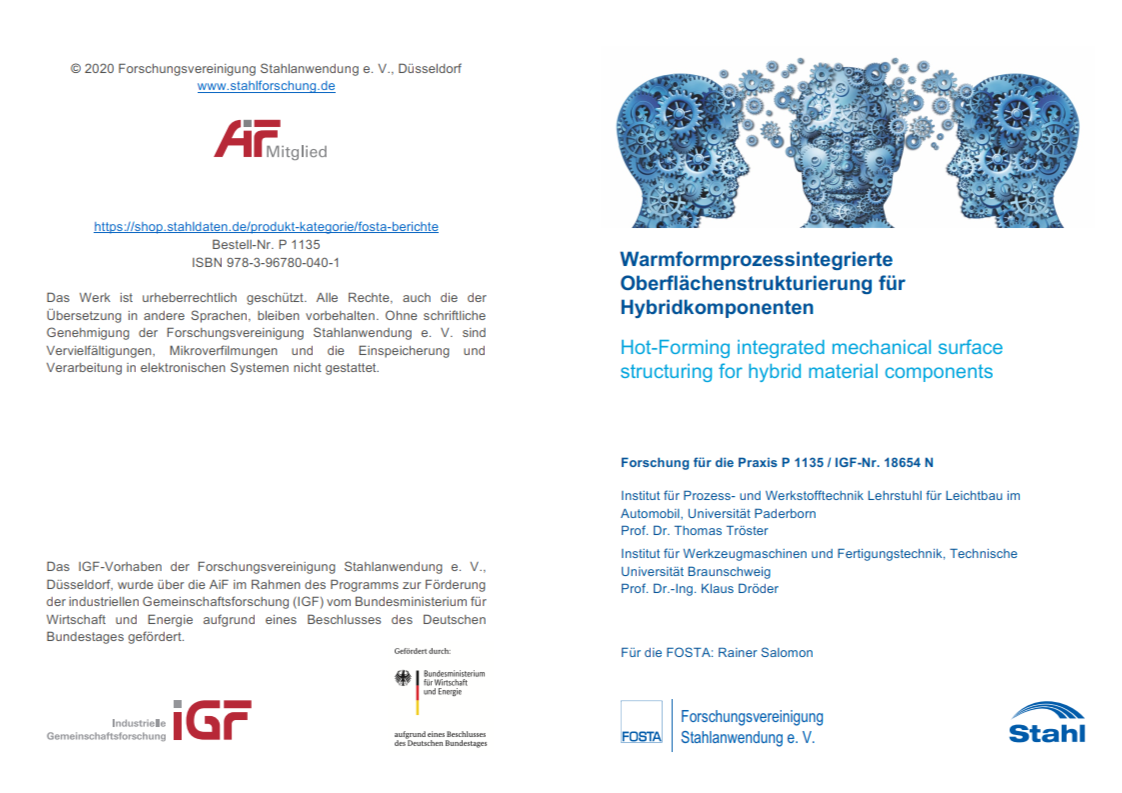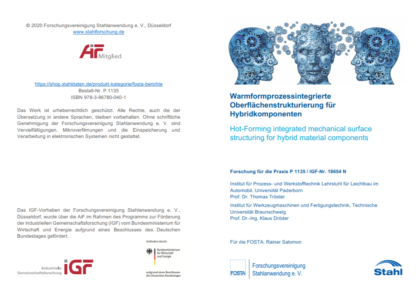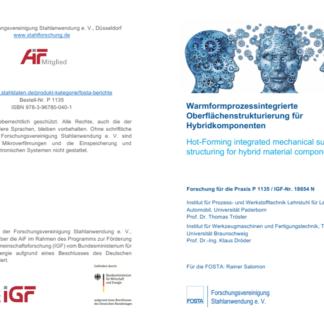Description
P 1135 – Hot-Forming integrated mechanical surface structuring for hybrid material components
Due to increasing demands in the areas of safety, comfort and lightweight design, there is growing demand for structural parts made of ultra-high-strength steels in automotive body-in-white construction. By using these steels, the sheet thickness of the components can be reduced, thus lowering their weight. However, the production of complex geometries is proving problematic due to the high mechanical strength of these steels, as large loads act on the forming tools and the process accuracy is impaired by the springback behavior. The press hardening process provides a solution to this problem. Press hardening is a non-isothermal process that combines the forming of the component and hardening of the material. In this process a martensitic hardening of the sheet metal components can be achieved. However, stability problems with reduced sheet thicknesses limit the lightweight potential of press-hardened components.
In other branches of industry, such as the aviation industry, structural components are in many cases made of fiber-plastic composites (FRP) or, in more recent approaches, in hybrid composites of metal and FRP, while high-strength steels continue to dominate the automotive mass market. A targeted combination of both design methods leads to stress-adapted and cost-effective hybrid lightweight structures. In the load introduction area of such hybrid components, concentrated, three-dimensional load collectives often occur, which are preferably absorbed by isotropically acting metallic components. The critical point is the transition area or interface between the metallic and the fiber composite structure in which the forces must be transmitted. New surface pretreatment processes can contribute to the improvement of component performance by generating specific bonding defects.
In this project, a method is to be developed to introduce a surface structuring into the hot forming process of high-strength steels in order to subsequently achieve an improved bonding of fiber-reinforced plastics. The structuring is created by the corresponding hot forming tool, which eliminates an additional work step compared to other structuring processes. For this purpose, a tool for structuring at the specimen level is first developed, with which the specimens are simultaneously structured and hardened. Then the mechanical properties of the hybrid structures made of FRP and 22MnB5 are determined experimentally. Finally, the method is applied to an automotive body structure and validated.
Published in:
2020
Authors:
T. Tröster, K. Dröder




